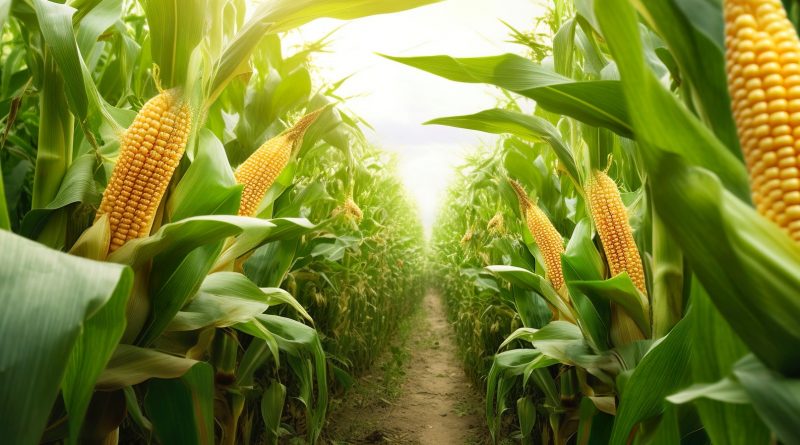The Ethanol Boondoggle
There are more than 250 million cars and light trucks that run on gasoline on the roads in the U.S. Every time a driver of one of those cars stops for fuel, what they pump into their tank is, by law, about 90% gasoline and 10% ethanol.
Ethanol is made primarily by grinding corn and then fermenting it. Corn is the largest crop in the U.S. Each year farmers plant roughly 90 million acres in corn–growing almost 14 billion bushels. Thirty percent of the U.S. corn crop goes into making ethanol for fueling vehicles.
Ethanol is inefficient solar power
In a sense, this is a form of solar power. Through photosynthesis the corn plant captures the sun’s energy and turns it into corn. However, it’s a ridiculously inefficient way to capture the sun’s energy for our use in transportation. The corn must be planted, treated with fossil-fuel-derived fertilizers, protected from weeds and insects with toxic chemicals, and harvested. Then it must be pulverized, inundated with water, fermented, and distilled into alcohol, which can then be mixed with gasoline.
According to the Iowa Climate Statement, signed by hundreds of college and university faculty scientists, a “one-acre solar farm produces as much energy as 100 acres of corn-based ethanol” over the course of a year. (I’ve read other estimates that an acre of solar panels produces 200 times the energy of an acre of corn for ethanol.)
Bill McKibben wrote recently about visiting Jon Carson in Illinois farm country. Carson comes from a farm family and now works in solar energy. He drives an F-150 pickup truck– the most popular vehicle in the U.S. for the last 47 years. He drives the new EV version called the Lightning. I can’t get over something that he said to McKibben:
If you grow an acre of corn, it will produce 900 gallons of ethanol, which will get you about 25,000 miles for a Ford F-150 pickup. Which is, not bad I guess. But let’s say we put solar on that same acre. It will produce enough electricity every year to drive my Lightning 550,000 miles.
Jon Carson of Trajectory Energy
Solar plus food in ethanol fields could fully power the U.S.
Another study compared current ethanol production from cornfields with agrivoltaics. Agrivoltaics is combining solar panels and food production on the same land – generally by spacing the rows of panels far enough apart to get a tractor between them and growing a crop such as potatoes. One study from Germany found it possible to get 80% of the power you would get from using the land just for solar and 80% of the potato production you’d get from a potatoes-only field.
According to this study, even if you assume you get only 50% as much solar energy by combining farming and solar panels, the solar production possible is huge. No one would propose converting millions of acres of fertile farmland to solar fields, or even agrivoltaic fields, but it’s a revealing thought-exercise. They found that if you were to convert all of the millions of acres now growing corn exclusively for ethanol as a gasoline additive into agrivoltaics, you would produce more than enough solar power to meet the electricity needs of the entire U.S., including enough to power a 100% electric vehicle fleet for the nation.
You would gain all of the food produced on the he agrivoltaic fields, save money and pollution by eliminating the fossil-fuel-produced fertilizers needed for corn. Furthermore, when all factors are taken into account, it turns out that ethanol produced in the U.S. emits 24% more emissions than gasoline.
Why ethanol?
So why are we committing close to 30 million acres of fertile farmland to grow corn just to make into ethanol to put in our automobiles?
The federal Renewable Fuel Standard (RFS), signed into law by George Bush in 2005, requires that about 10% of gas-engine fuel sold in the U.S. be ethanol. It’s a huge support to big agriculture and was supposed to make us more energy independent. Now that the U.S. is the world’s largest exporter of oil, the independence argument is irrelevant. But the farm lobby loves the ethanol rule and politicians don’t want to touch it.
RFS is a failure
The RFS is the largest biofuel program in the world, and it is a failure. It makes the climate crisis worse, uses up land that could be used to feed people, increases the use of fossil fuel-produced fertilizers and toxins, and it slows down our transition to efficient renewable energy. I don’t want us covering lots of acres of fertile farmland with solar panels, but if we put panels first on parking lots, roofs, and brownfields, and convert some ethanol corn acres to agrivoltaics, we can dramatically reduce our use of fossil fuels, produce more food, and reduce pollution.
Now that solar panels have become more efficient and less costly there is new interest in reviewing the Renewable Fuel Standard. The Biden administration is now funding projects to further develop agrivoltaics. Public support for government action to reduce emissions is high. We can all help move things along by spreading awareness about the problems with our current use of ethanol for vehicle fuel.
__________
The photo above of a corn field is courtesy of https://www.vecteezy.com/.
I’ll let you know when my next new post is available.
Click “Subscribe” below.

Wow! this is powerful information. I knew that mandating ethanol was a form of price support for corn farmers, but didn’t know much of the rest of this. It’s very important to help more people understand what can be gained by changing the way we power our vehicles and our whole lifestyles.
Thanks so much, Russ, for writing these excellent columns!!